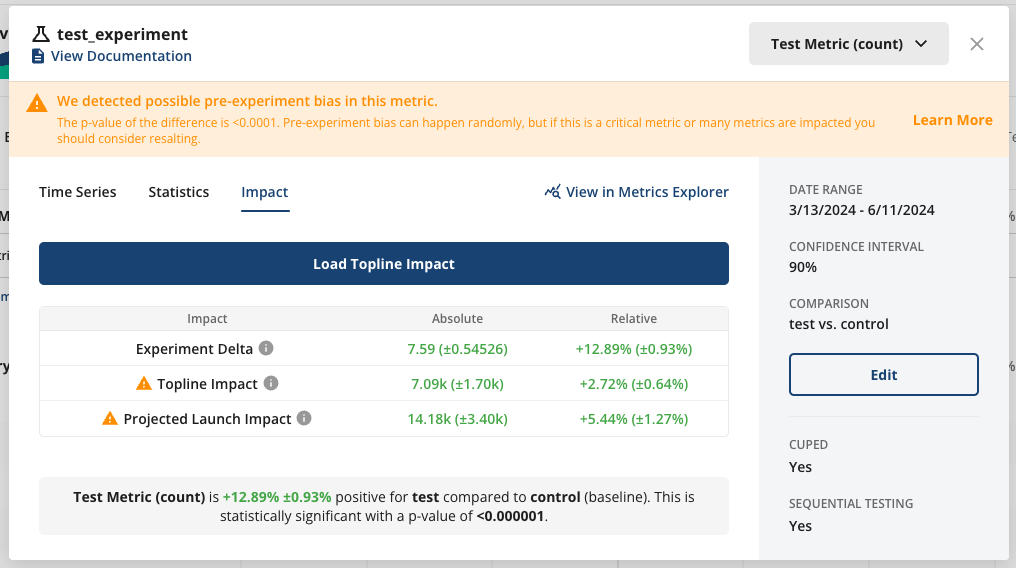Step 1: Connect Your Warehouse
Statsig will use your warehouse to store and analyze your experiment data; you have total control and visibility over the data itself. To connect your warehouse, visit your warehouse’s setup page.Step 2: Connect to Data
To connect your event or metric, data, you’ll create a Metric Source. Navigate to the Metric Sources page and click Create to make a new Metric Source.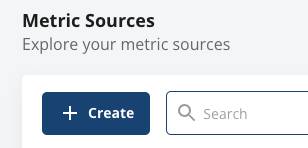
Table metric source type and put in the path to your table. Otherwise, you can write a query to access or generate some test data.
Press analyze to generate samples from your table, and then map required columns (Timestamp and UserID) so that Statsig can connect your metric data to your assignment data.
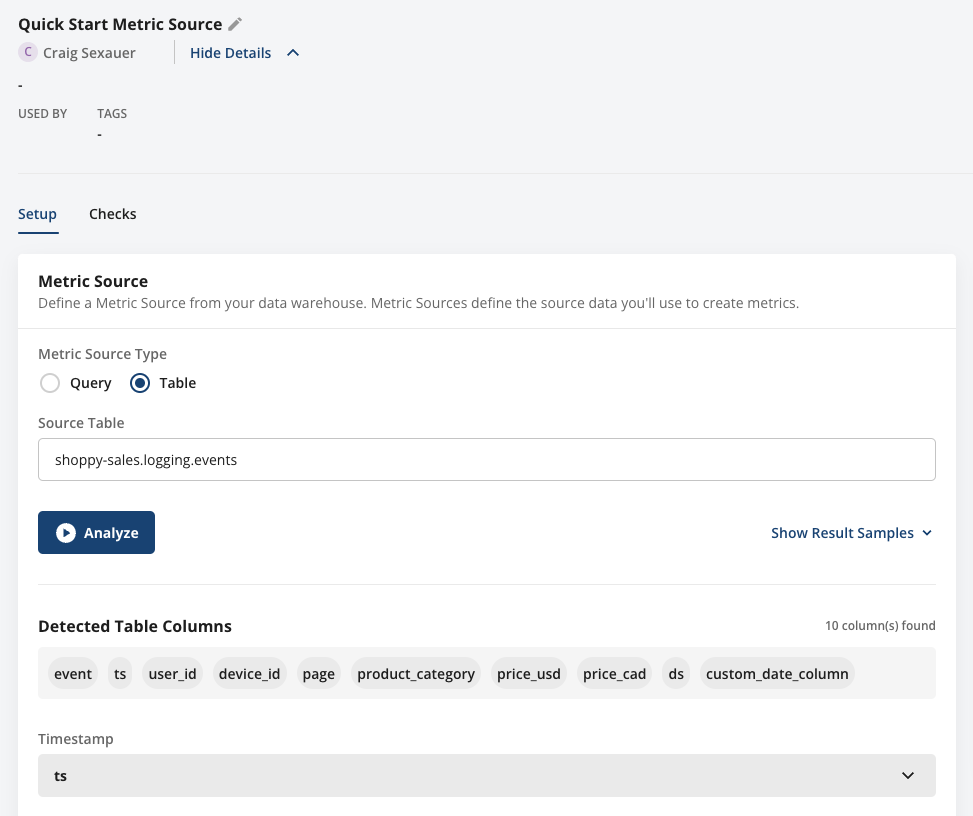
Step 3: Make a Metric
Now that you’ve connected to data, you can build metrics on top of this. Later, this can be configured programmatically, but for now navigate to your Metrics Catalog and click Create to make a new Metric.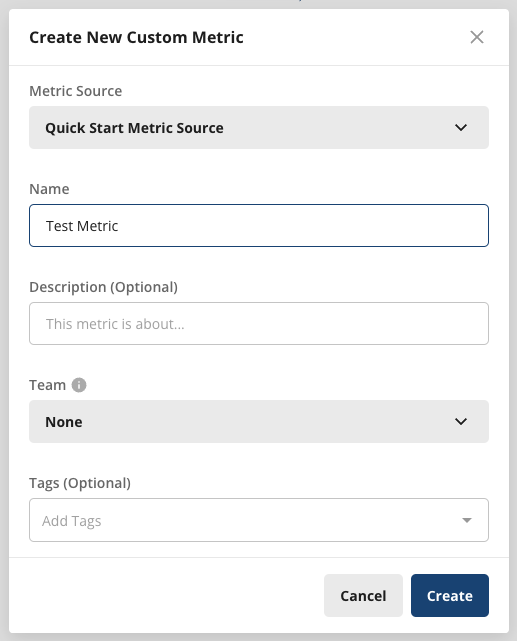
Step 4: Connect an Experiment
Next, you’ll connect to experiment data. If you have a table with exposures you’ve already logged, feel free to use that. You’ll just need to make sure that you’ve logged the same identifier there as you used in your metric source. Otherwise, you can quickly follow our guide to setting up an A/A test, using the same data you used for your exposures. This should generate a neutral experiment result. Navigate to Assignment Sources and create a new one.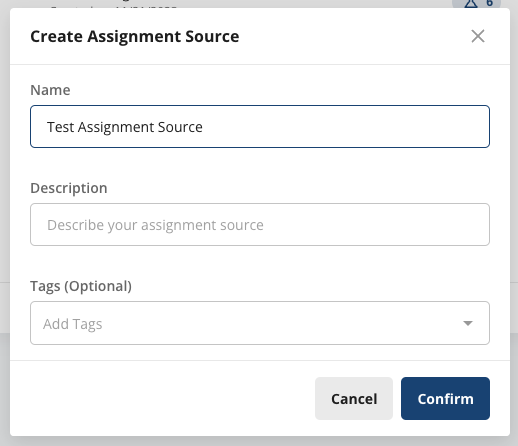

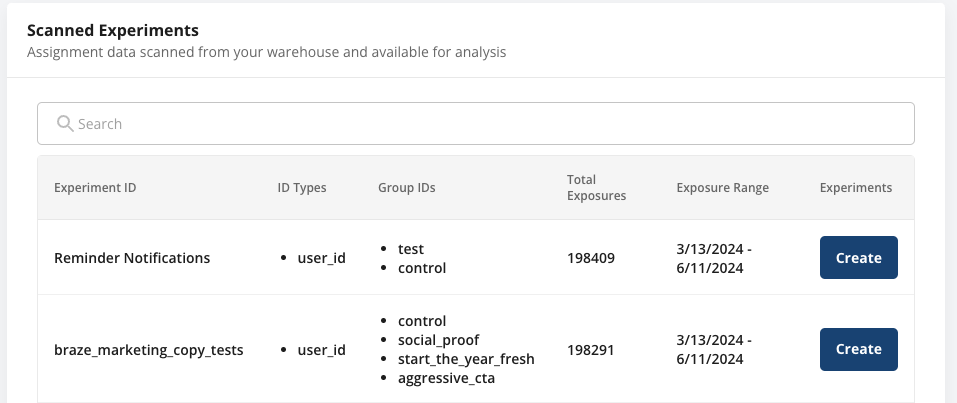
Step 5: Analyze Your Experiment
Press Create on your experiment of interest to start creating your experiment.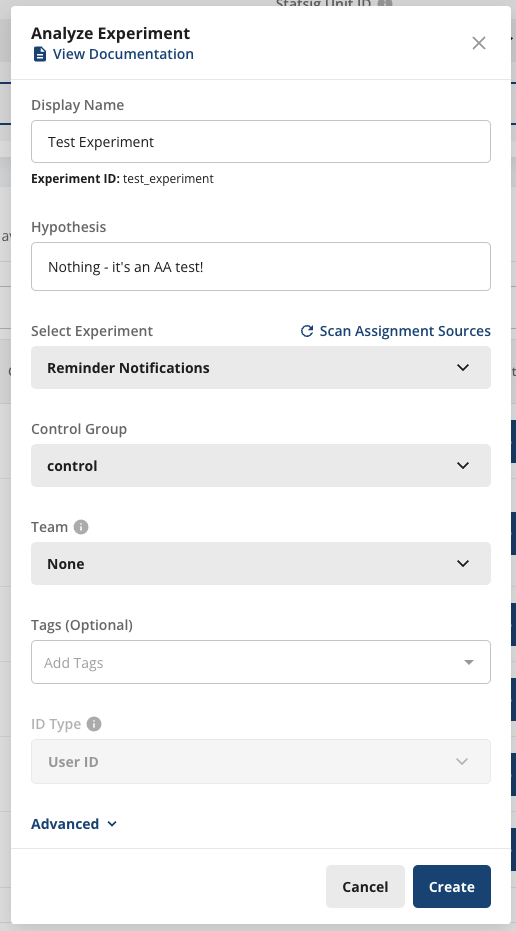
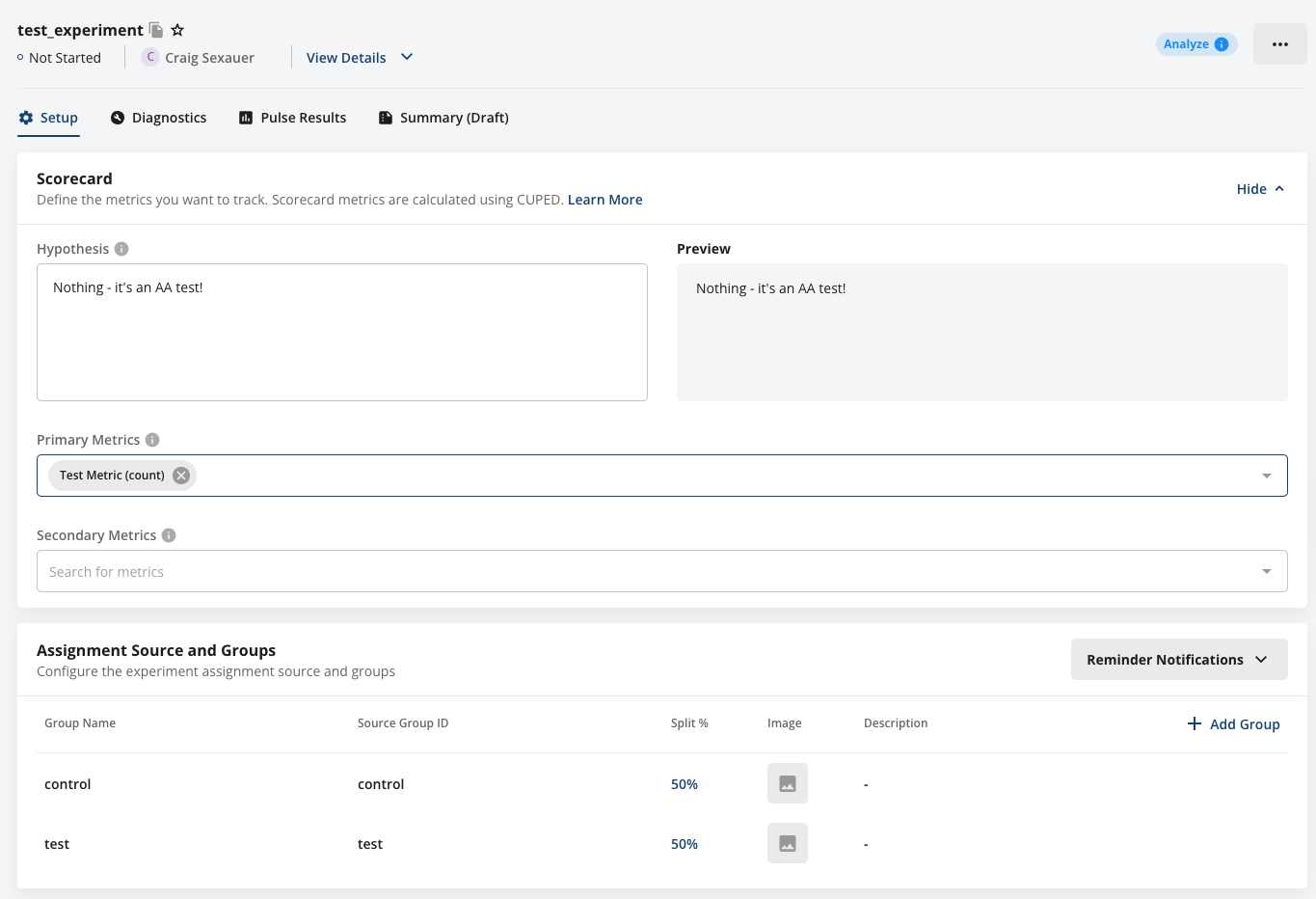
Step 6: Read Results
If everything worked, you should see:- Your hypothesis. This lives at the top of the results page to give context and guide interpretation of the results.
- Cumulative exposures. This shows you the number of unique units exposed to each group, and the balance between groups
- Your scorecard. This shows a quick summary of the observed differences in metrics between your experiment groups, with access to additional views and raw statistics

- Click into a result’s error bar to view raw statistics, timeseries, and projected timeline impact
- Hover over a metric to get detailed context on its inputs and how the pulse result was calculated
- Navigate to the diagnostics tab to see the checks Statsig automatically ran to make sure your experiment results were valid
- Click into the reloaded timestamp to see the run time and query cost of your pulse analysis, as well as the SQL queries used to calculate the pulse results
- Visit the explore tab to start filtering data, exploring results by dimensions, or running other follow-up analyses
- Visit the summary tab to start putting together a report to share out the results of your analysis
- Start a discussion or add context, either in the discussion tab or with in-context comments on top of the results themselves
